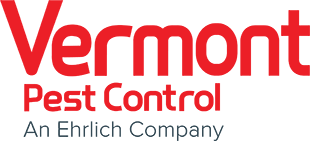Bothers Insects, ticks, bugs, and mollusks, harm plants, creatures, and constructions in numerous ways. The harm might give signs to the personality of the irritation. Even though irritations are available, the degree of harm they are making may not be of enough financial significance warrant control measures in Pest Control Essex . The potential for damage might be more noteworthy at certain times than at others. For instance, bugs that harm leaves in the spring are normally more hurtful to a plant than insects that harm leaves in the pre-fall when the plant is going to lose its leaves.

Irritations of Plants
A few bugs and bug-like irritations feed on plant leaves. For some plants, the passing of a couple of leaves won’t cause diminished yield. Be that as it may, when nuisances eliminate most or each of the leaves from a plant, the plant is killed or is left hindered and ineffective. The larval stage (caterpillars) of certain butterflies and moths can cause exorbitant harm. Models remember vagabond moths that feed for trees and imported cabbage worms that feed on cabbage leaves. A few insects are additionally leaf-eating bugs, including the Colorado potato scarab and the Mexican bean creepy crawly. Snails and slugs feed on plants around evening time. They tear openings in foliage, organic products, and delicate stems, utilizing a grate-like tongue. They might eat whole seedlings. As they move, snails and slugs leave an ooze-like mucous path that dries into shiny streaks. These streaks are unfortunate on botanical and elaborate harvests and on the pieces of yields that are to be sold for human food. A few bugs drill into creating inside the natural product, grain, or other plant parts. Normally the larval stage causes harm during taking care of. Since they are inside the plant, these irritations frequently cause critical harm before they are detected. They are likewise more troublesome to control when they are inside the plant. Inward feeders incorporate boll weevils, rice weevils, birch leaf excavators, and codling moths.
The larval phase of certain bugs and bug-like bugs drill into stalks or stems. This hurts the plant by debilitating the tailor stem and by keeping water and food from streaming openly inside the plant. Debilitated plants might blow over or shrink because of the harm. Instances of these drills incorporate European corn drills, squash plant drills, and dogwood drills. A few bugs and bug-like bugs have sucking mouthparts that permit them to suck juices from plants. The action of these bugs can prompt twisting and hindering of leaves and stems; shrinking brought about by blockage of water-conducting tissues, and dead regions brought about by poisons the vermin infuses during taking care of.
As they feed, plant-sucking bugs may likewise spread plant illness organic entities. Some plant sicknesses can be constrained by controlling the bug bothers that cause their spread. While they suck on the plants, aphids and comparable bugs discharge honeydew that trickles onto the lower portions of the plant. A parasite that causes a dark dingy form regularly becomes on this tacky material. Other instances of plant-sucking vermin are smell bugs and squash bugs.
Underground feeders
Numerous bugs and bug-like bugs cause harm by benefiting from plant roots. Root feeding irritations obstruct the plant’s water and supplement take-up. They can cause dead spots in turfgrass, “goose-necking” in corn, and unfortunate tone, hindering, and loss of force in a wide scope of harvests. A few underground feeders are the larval phase of bugs. They incorporate white grubs, corn rootworms, and numerous sorts of fly slimy parasites. Underground vermin are regularly challenging to distinguish because they shouldn’t be visible without evacuating the plants.

